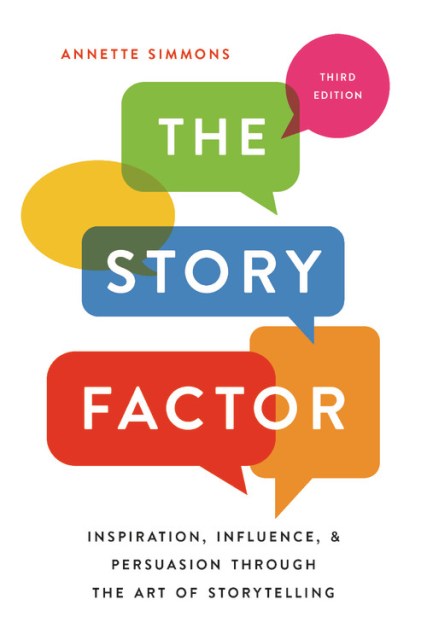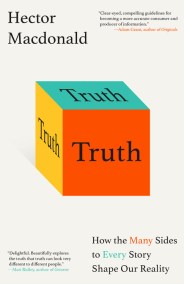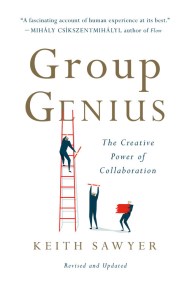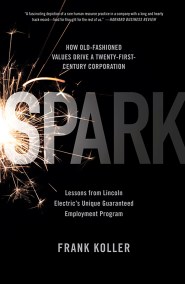Promotion
Use code MOM24 for 20% off site wide + free shipping over $45
The Story Factor
Inspiration, Influence, and Persuasion through the Art of Storytelling
Contributors
Formats and Prices
Price
$19.99Price
$25.99 CADFormat
Format:
- Trade Paperback $19.99 $25.99 CAD
- ebook $14.99 $19.99 CAD
- Audiobook Download (Unabridged)
This item is a preorder. Your payment method will be charged immediately, and the product is expected to ship on or around October 8, 2019. This date is subject to change due to shipping delays beyond our control.
Also available from:
Fully revised, updated, and expanded, this modern classic will teach you to use the art of storytelling to persuade, motivate, and inspire in life and business
In this modern classic, Annette Simmons reminds us that the oldest tool of influence is also the most powerful. Fully revised and updated to account for new technology and social media, along with two new chapters on the role of stories in the development of civilization and how to adjust your story to your specific goal, Simmons showcases over a hundred examples of effective storytelling drawn from the front lines of business and government, as well as myths, fables, and parables from around the world. Whether writing a screenplay, or announcing a corporate reorganization, Simmons illustrates how story can be used in ways that cold facts, bullet points, and directives can’t. These stories, combined with practical storytelling techniques, show anyone how to become a more effective communicator and achieve their goals.
Genre:
-
"Annette Simmons was my guiding star when I was looking for a way to work with stories. The Story Factor paved the way for me to do rewarding work building communities and broadening education. With this third edition Annette proves once again that her knowledge and insights are alive and more relevant than ever."Peter Frühmann, Founder of Storybag.nl
-
"The Story Factor remains required reading for anyone working at the intersection of communication and culture. For better or worse, the future requires storytellers willing to imagine what is truly good for humans and wield their power thoughtfully. I'm grateful that Annette's wonderful book is confronting the ethical aspects of the stories we tell. I hope that many will pick it up and do the same!"Zack Bryant, Creative Director, Journey Group
-
"After 20 years of reading every book written on storytelling, the Story Factor still stands out as the most comprehensive, the most inspiring and the most useful of any book I've found. This new release includes a much-needed deep dive into the morals and responsibilities of storytelling. The Story Factor is not only a book you need, it's a book that the world desperately needs."LisaBloom, Founder, Story Coach
-
"Simmons beautifully captures the role stories play in solving human problems. Her invitation to expand our circle of moral concern through storytelling gives hope for restoring our social fabric in divided times."Jesse Scinto, Lecturer and FulbrightU.S. Scholar MS Programs in Strategic Communication,Columbia University
-
"We in the story listening/story sharing business have many sages, many authorities, many folks that give us new and effective ways to stir the pot of story into something delicious, but we have only one encyclopedia of story, her name is Annette Simmons."Joe Lambert, Chief Listenerand Convener, StoryCenter
-
"Nearly two decades ago, Annette Simmons sent a shockwave through the world of leadership thinking with a curious proposition: That by telling stories, a leader might exercise deep influence. She's back, surveying the industry that has grown from her groundwork, and her message in this updated edition is more fierce and more urgent than ever before: As weavers of narratives, ours is a deeply moral calling that carries great responsibility. Simmons' voice is more essential, prophetic, and convicting than ever. Her message demands our attention."David Hutchens, Leadership Storytelling
-
"Re-reading my dog-eared, marked-up copy of The Story Factor makes me nod my head in both agreement and epiphany. In this new edition, she holds supreme as our most important thinker in applied narrative."Thaler Pekar, Thaler Pekar &Partners
-
"Twenty years ago when it was first published, this book became an instant classic and spotlighted Annette Simmons as one of the pioneers of organizational storytelling. Now she updates and expands her foundational work, offering us a strong voice on behalf of staying awake to both the power and the pitfalls of story work. In this time of competing and conflicting narratives, where the future of our world hangs in the balance, The Story Factor continues to chart a path for everyone who seeks to influence with integrity."Mary Alice Arthur, Story Activist (www.getsoaring.com)and co-founder of Story the Future (www.storythefuture.com)
-
"Once again internationally recognized genius in business storytelling, Annette Simmons, captivates us with her writing, her wisdom, and her deep understanding of the human spirit. She takes us on a journey about the critical importance of storytelling and how to do it filled with sage advice, wonderful stories, and practical how-to. If you want to be a better leader or manager, with better business results, follow Annette's wisdom. You'll be glad you did."Dr. Karen Dietz, co-author Business Storytelling for Dummies
- On Sale
- Oct 8, 2019
- Page Count
- 368 pages
- Publisher
- Basic Books
- ISBN-13
- 9781541673496
Newsletter Signup
By clicking ‘Sign Up,’ I acknowledge that I have read and agree to Hachette Book Group’s Privacy Policy and Terms of Use







